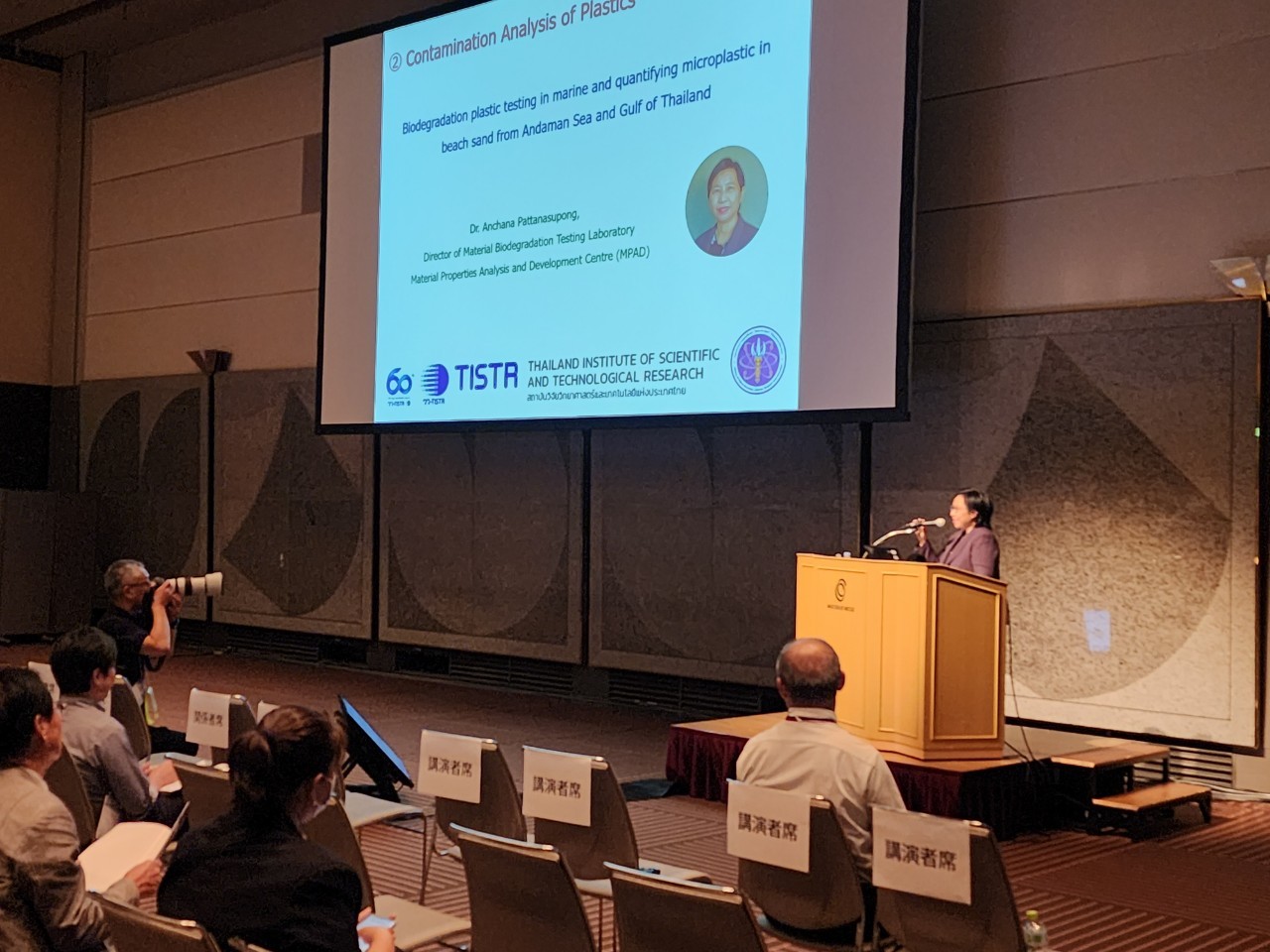TISTR participated in the Japan Analytical & Scientific Instruments Show (JASIS) 2023, the cutting-edge scientific instruments, analytical system & solution exhibition conference hosted by Japan Analytical Instruments Manufacturers’ Association (JAIMA). The event was held during 6-8 September 2023 at Makuhari Messe International Exhibition in Chiba, Japan.
On that occasion, Dr. Anchana Pattanasupong, Director of Material Biodegradation Testing Laboratory (MBT), TISTR was an invited speaker at the conference room under JASIS 2023 themed Contamination Analysis of Plastics. Dr. Pattanasupong gave an oral presentation on the topic “Biodegradation Plastic Testing in Marine and Quantifying Microplastic in Beach Sand from Andaman Sea and Gulf of Thailand”. It was her research work and case study of Thailand on microplastic and its degradation in the Andaman sea as well as the sea coast.

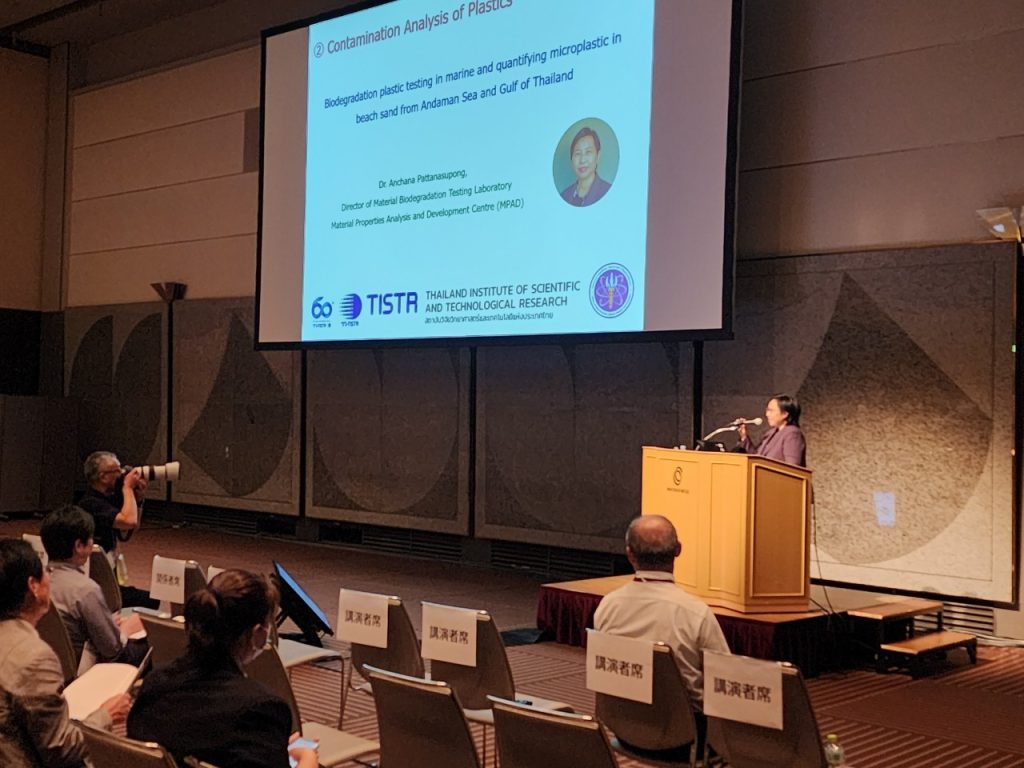
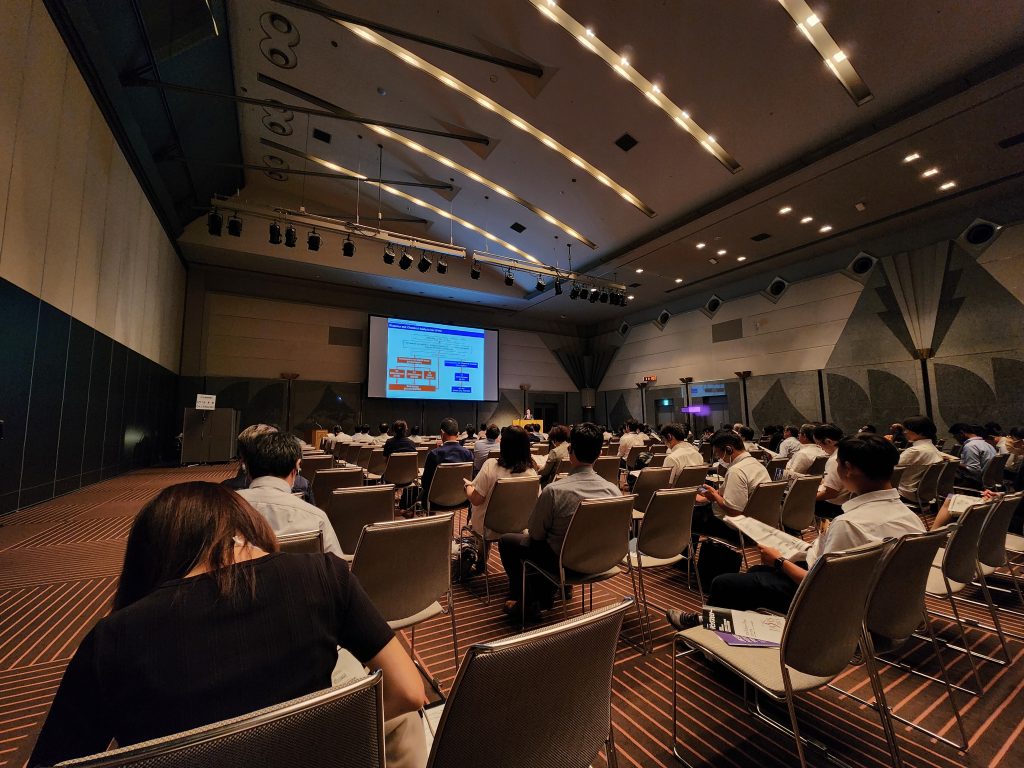
In addition, TISTR nominated Ms. Jantana Panpran to have an academic poster presentation at the RSC Tokyo International Conference 2023, the other event of JASIS 2023. Ms. Panpran presented her poster on Application of Organic Carbon Analyzer for Biodegradability Test of Chemical Products According to OECD 301A”.
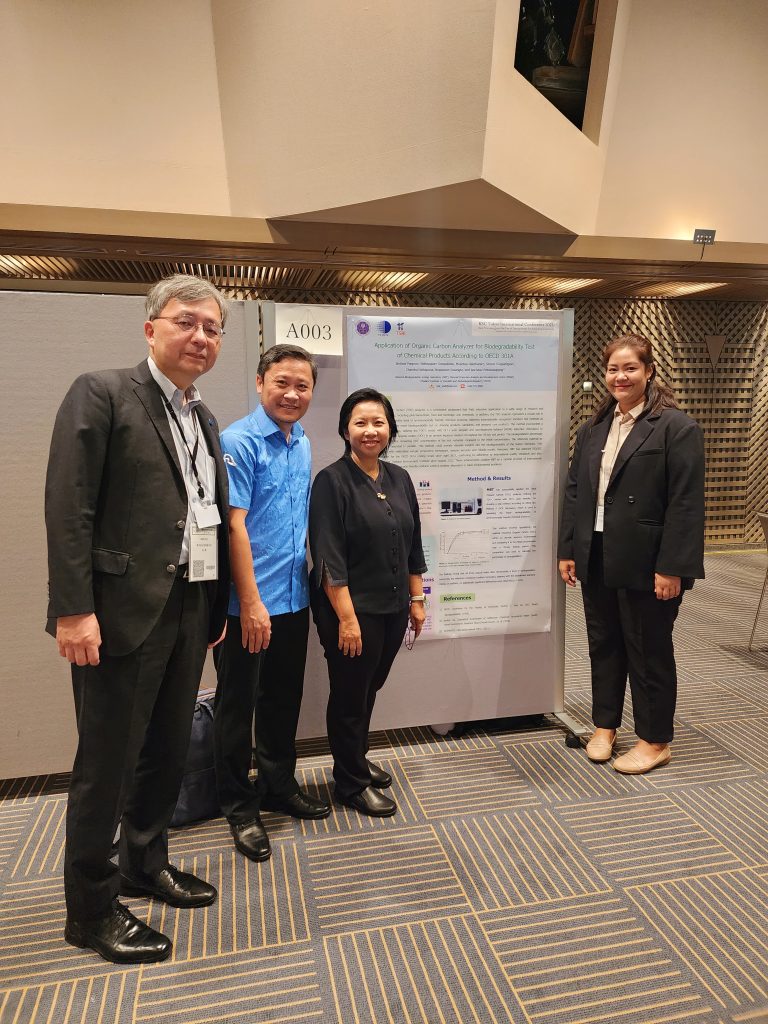
JASIS is an annual expo event of JAIMA having a number of visitors and booth exhibitions from the member companies, universities, including the international partners of JAIMA. Here are the summary of the JASIS and conferences under.
20230906-1-E
JASIS SQUARE
6/SEP/2023 10:30~12:00
Makuhari Messe
Reported by Shimadzu, Noguchi
The “JASIS Square” has been set up at the JASIS venue as a place for everyone to gather and interact. The “Research Institutes and Academic Societies Corner” and “International Organization Area” are also placed in this area, where highly topical global-related exhibits and presentations, as well as information on related research institutes are displayed in one place.
The presentation stage in the exhibition hall will offer 13 lectures, including collaborative Topic Seminars and new product introductions (flash presentations) by exhibitors.
The exhibition will include the latest trends in “Laboratory Digital Transformation,” demo exhibits and a special exhibit commemorating the 20th anniversary of the completion of human genome decoding.
【 Topic of September 6 】
・Opening Ceremony / Press Conference
The ribbon-cutting ceremony marked the opening of JASIS. Chairman Masayuki Adachi stated, “We are very pleased to be able to hold a face-to-face exhibition without restrictions and we are confident that this event will contribute to the development of science and technology through active exchange.”
A press conference was then held at the same venue.
The message of JASIS exhibition is “Future Society Supported by ‘Measurement'”[TT幸1] . Mr. Adachi told the journalists that he hoped this message would be conveyed to many people who are not familiar with JASIS.

・Flash Presentation
Got a lot of information in a short time!
In the stage area, JASIS exhibitors took the stage one after another to introduce their “best products and technologies. Visitors were able to obtain a lot of information in a short time.
・Presentations by LabDX exhibitors
The following three presentations were made.
1 Digital laboratory that promotes data and robot-driven science
2Introduction of actual installation examples of automation systems for laboratories[ゲユ1]
3 Introduction to automation technology at research and development sites and the future of AI utilization
Advanced Materials Latest Trends in Plastic Recycling and Instrumental Analysis
Wednesday, September 6, 2023 10:30-12:00
Makuhari Messe International Conference Hall Convention Hall A
Reporter: Shiono, JEOL Ltd.
1. Carbon cycle from the viewpoint of plastic recycling
Tohoku University Graduate School of Environmental Studies
Professor Toshiaki Yoshioka
Plastic resource recycling is necessary to reduce marine plastic pollution. For this purpose, various and complex pretreatment of plastics is important, and oil conversion technology, which emerged from Japan in the 2000s, will be utilized for thermal decomposition in the oil refining process. In addition to carbon circulation, it is also necessary to examine chlorine circulation from the material flow of chlorine. And it is necessary to increase such facilities with these technologies as a recycling business rooted in the region.
2. The role of instrumental analysis in plastic recycling
Tohoku University Graduate School of Environmental Studies
Assistant Professor Shogo KumagaiThe development of instrumental analysis is essential for the development of plastic recycling. This is because of the wide variety of plastics used in various industries and are complex mixtures. In this situation, specialized analytical equipment is required to analyze the physical properties of plastics, and specialized analytical equipment is also required to analyze additives and impurities. Therefore, a wide variety of analytical instruments will continue to be required for the development of plastics and their recycling.
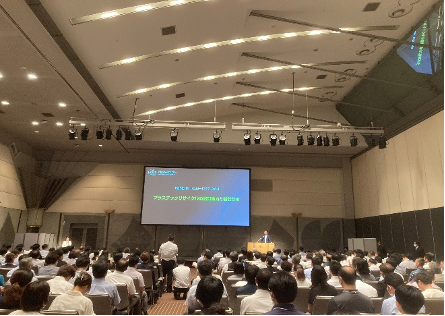
20230906-3
Japan Pharmacopoeia Seminar
Wednesday, September 6th 10:30-12:00
Makuhari Messe International Conference Room
Reported by: Okamoto, HORIBA
Recent topics on Japanese Pharmacopoeia
National Institute of Health Sciences
Deputy Director General
Yoshiro Saito
Mr. Saito introduced recent reviews regarding the Japanese Pharmacopoeia. For example, in 18th Edition Supplement I, 11 new items were added, 82 items were revised, and 2 items were deleted. In addition, the PDG (Pharmacopeial Discussion Group) is currently working on international harmonization with Japan, the U.S., and Europe, and is currently working on the reagent act and the articles of pharmaceutical additives. From 2022, PDG expanded its membership to include the Indian Pharmacopoeia.
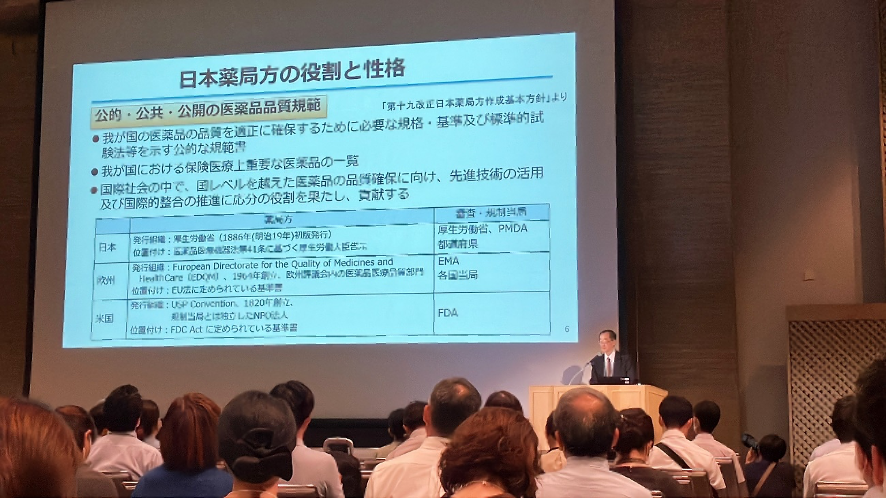
September 6, 2023 14:00-15:30 International Conference Room
Reported by: Sakai, Hitachi High-Tech
1st Public Lecture of JSPS R053 Committee on Collaboration Platform of Design, Measurement and Analysis
Part 1 Current status of the development of the common measurement data format
Validation of MaiML Data File Structure with Schema Check Tool
Mr. Takasugi of JEOL introduced details of MaiML schema. Information about MaiML and procedures for using MaiML schemas will be distributed on a website of the Japan Analytical Instruments Manufacturers Association (JAIMA). around the time JIS will be promulgated.
Leveraging common data formats broadens the vision of integrated data analysis with MI platforms.
Mr. Yamamoto of Shimadzu Corporation explained in detail about the process and current challenges of material informatics and its implementation in society with the ultimate goal of finding new knowledge of material development.
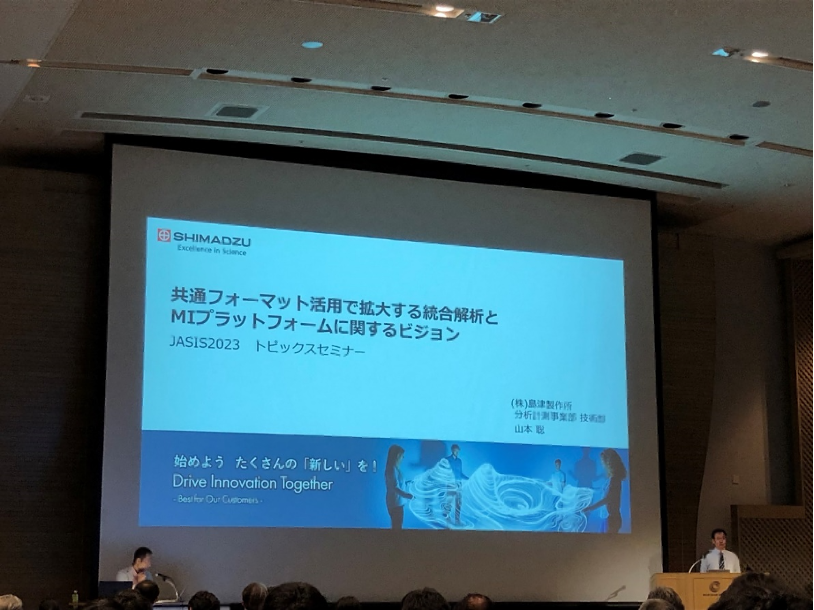
Expectations and challenges for a common format for Lab DX
Mr. Kobayashi of the University of Tokyo, referring to Pieter Bruegel’s 16th-century painting “The Alchemist,” he enumerated the challenges to today’s laboratories and introduced how to convert laboratories into “cloud-base” laboratory, using common data format.
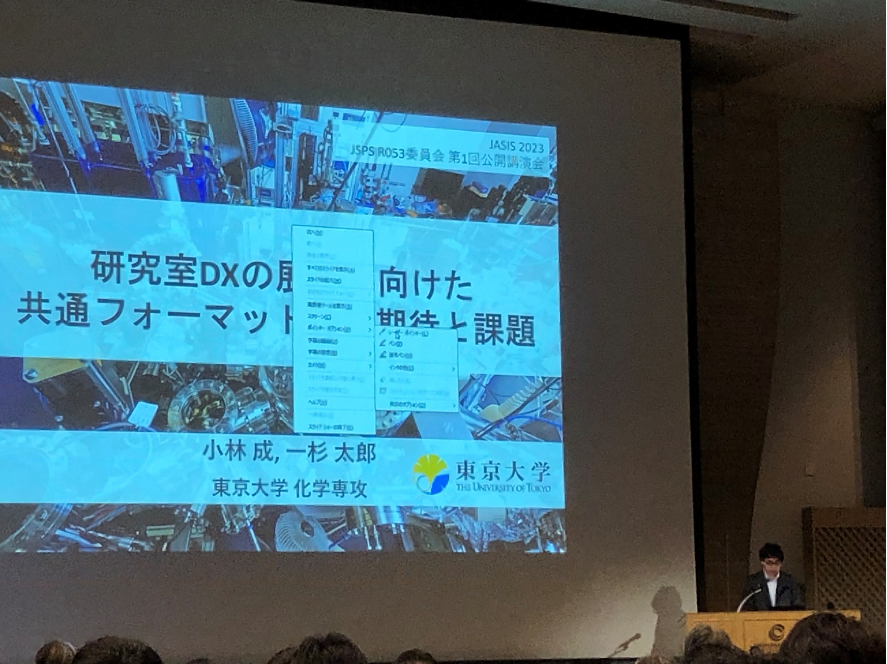
Prospects for Utilization of Common Data Formats from the Viewpoint of the Materials Industry
Mr. Nagatomi of Asahi Kasei Corporation gave a presentation on “NIR (chemical composition) and reviews of powder foundation” as a case study on the theme of informatics and measurement analysis platform in development and manufacturing and measurement analysis in a material DX1 smart lab.
The Polymer Challenge -Achieving a Circular Economy through Weight Reduction
Wednesday 6, 2023 13:00-13:30
International Conference Hall A
The University of Tokyo/Graduate School of Frontier Sciences, Professor
Kohzo Ito
【Slide-Ring Materials for Circular Economy】
There were about 150 listeners and the seats in the hall were almost filled, indicating the high level of attention to this topic. The lecture lasted about 40 minutes.
The lecture consisted of four themes;
- Polymer materials using rotaxane structure
- The Cabinet Office’s “inPact” Project
- NEDO Moonshot R&D
- SIP (Strategic Innovation Program) of the Cabinet Office
The circular economy of plastics has recently become a global topic. Marine plastic pollution is particularly problematic. Polymers cannot be recovered and if they are washed into the ocean, they will be eaten by fish and affect not only the environment but also the human body. If polymers are degraded, they can be recycled, leading to the realization of a circular economy.
Degradable polymers have existed for some time, but the lack of strength been a problem. Polymers material used in the ocean need to have high strength. The key to developing high-strength polymers is to allow crosslinking points to move freely.
Mr. Ito developed a cyclic polymer, a polymer with an elongated cross-linking point based on the rotaxane structure. Cyclic polymers are remarkably effective in toughening plastics, rubbers, and gels. In addition to universities, private companies are actively conducting research to achieve both degradability and strength in polymers.
Overseas, the circular economy is more active than in Japan, and Taiwan already has a regulation that 25% of plastics must be recyclable. In the future, it may become impossible to export plastic unless it is recycled, which will have a tremendous impact on the Japanese economy. It is necessary to promote the circular economy as soon as possible, not only to protect the environment but also to prevent economic losses.
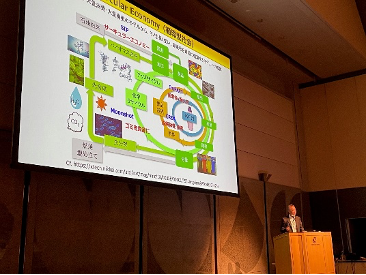
20230906-11
Latest Trends in Membrane Separation Technologies Contributing to Carbon Recycling
Wednesday, September 6th 15:00-16:30
Makuhari Messe International Conference Center Convention Hall A
Reported by: Okamoto, HORIBA
Outlook for the Membrane-based CO2 Separation
Yamaguchi University
Graduate School of Sciences and Technology for Innovation/Professor Emeritus
Kita Hidetoshi
Mr. Kita introduced the basics of membrane separation methods and thin-film separation methods that promote permeation using various references.
Zeolite membranes have attracted the most attention recently, but inorganic separation still face many challenges and one of them is cost.
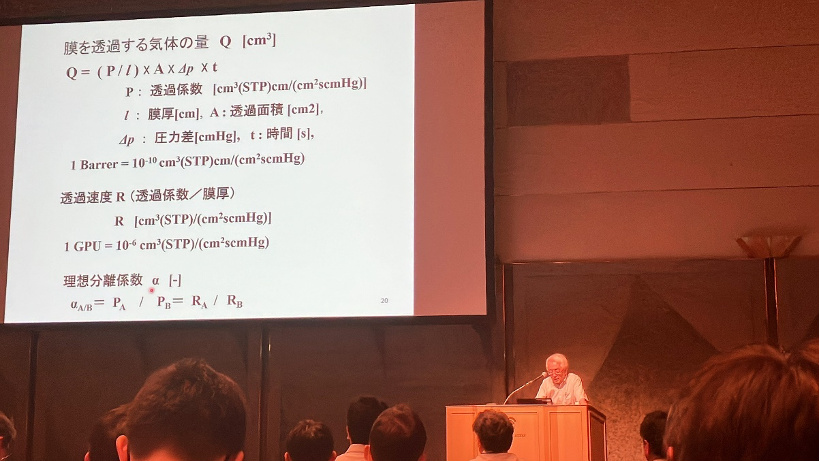
Recent Trends of R&D of CO2 membrane separation technologies for CCUS
Research Institute of Innovative Technology for the Earth (RITE)
Senior Researcher Chemical Research Group
TERUHIKO KAI
In addition to coal, the U.S. has begun demonstration tests on natural gas combustion exhaust gas. MTR (an American company) is leading the way toward practical application of this technology, and their membrane separation process was introduced. In addition, RITE is currently researching next-generation membrane module technology, and the analytical equipment and results used in their research were introduced.
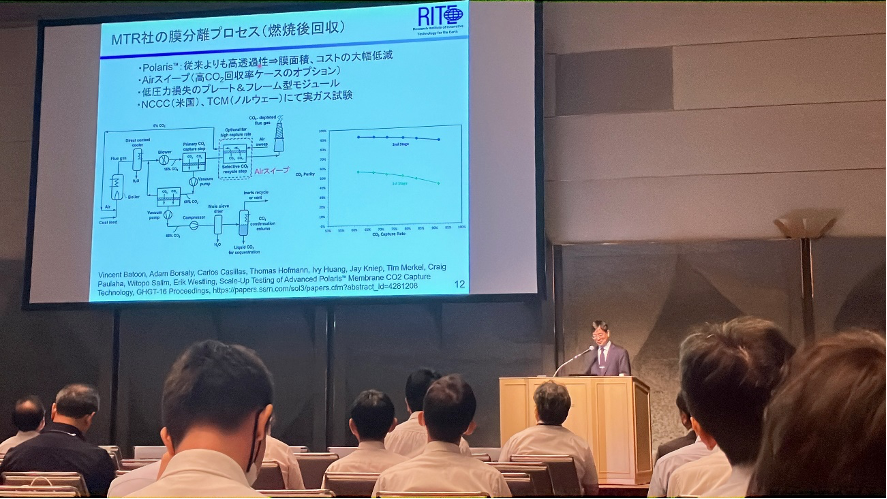
【Bringing More Delicious Rice to Your Table】
Thursday September 7, 2023 15:00-16:30
Makuhari Messe International Conference Center Convention Hall B
- Eating quality of rice and its evaluation
Niigata University of Pharmacy and Medical and Life Sciences
Faculty of Applied Life Sciences/Professor
Ken’ichi Ohtsubo
Rice is produced about 750 million tons per year worldwide and is considered the world’s three most important grains following corn and wheat. The taste of rice changes depending on the following factors:
1. Farmers: (1) Cultivar, (2) Producing areas, (3) Weather conditions, (4) Cultivation methods,
(5) Harvesting, drying adjustment,
2. Storage/Sales: (1) Storage, (2) Rice polishing processing,
3. Rice cooking at home and in the restaurant industry
Mr. Ohtsubo introduced rice palatability and its evaluation method. There are two general evaluation methods: sensory testing (standard method) and physical and chemical measurements (indirect method). Various factors such as amylose, amylopectin and other components, pasting properties, measurement of physical properties of rice, and measurement of taste components are used to estimate the taste of food. He also mentioned the following future issues: (1) elucidation of new taste factors, (2) highly accurate evaluation technology, (3) meeting diverse needs, (4) compatibility between agricultural characteristics and good taste, (5) advanced analytical equipment and statistical analysis methods, and (6) clarification of the relationship between test results and taste.
- Analysis of Rice Cooking Evaluation and Proposals by Business Category
ITOCHU Food Sales and Marketing Co. Ltd/Rice Sales Dept. Rice Support Sec.
MIKIKO ANDO
The condition of rice demanded varies depending on the business type and how to quantify the condition demanded by the customer is an eternal theme for us. ITOCHU Food Sales and Marketing Co. Ltd makes full use of inspection equipment to develop unique numerical values and create inspection methods that meet customer demands. They will continue to search for inspection methods that allow them to make proposals that fit the trends of each business category and contribute to the reduction of food loss and energy consumption, as well as the SDGs.
20230907-8
Exhibitors from overseas
Thursday, September 7th 9:30-17:30
Makuhari Messe International Conference Room
Reported by: Okamoto, HORIBA
[US booth]
The American organization’s booth was located at the back of the venue, in the overseas organization corner of JASIS SQUARE. When I asked the person in charge of the booth about his impression of the exhibition, he said that it was a lively and very nice exhibition. Exhibiting organizations from the United States this time were Pittcon, the U.S. Embassy’s Commercial Service, the Iowa Economic Development Authority, and the Georgia Department of Economic Development.
Pittcon Booth(Below): Pittcon is a dynamic, transnational conference and exposition on laboratory science, a venue for presenting the latest advances in analytical research and scientific instrumentation, and a platform for continuing education and science-enhancing opportunity.
Booths of Iowa Economic Development Authority, and the Georgia Department of Economic Development
【Korea R&D Industry Association (RNDIA) Booth】
The 10 participating companies were mainly founded by professors and graduates of KAIST (Korea Advanced Institute of Science and Technology). The exhibits included a tabletop scanning electron microscope, a portable gas chromatograph, a real-time PCR system, an EEG monitoring system, and various other equipment.
20230908-2-E Analysis of Environmental Contaminants
2023/09/08(Fri)10:30~12:00
Makuhari Messe・International Exhibition Hall Convention Hall B
Reporter:DKK-TOA Corporation Fujimoto Kazuki
1. Characteristics and Health Risks of Ambient Nanoparticles
Kanazawa University / Faculty of Geoscience and Civil Engineering, Institute of Science and Engineering / Project Professor, Professor Emeritus
FURUUCHI Masami
Mainly in Southeast Asia, PM0.1 emitted by man-made and natural causes such as field burning by farmers, power generation, cooking and construction, and forest and farmland fires poses a high health risk that transcends national borders. As an international observation department, EA-Nanonet, gathers information locally and analyzes the characteristics and correlations according to the circumstances of each country. In the future, it is necessary to deepen the understanding on the health effect through the approach of the medical viewpoint such as the Epidemiological Survey, and the consideration of the inclusion component of the plastic combustion origin in the developing country.
2. Toxicity identification and evaluation of AhR and ER agonists in urban ambient particulate matter from Hanoi, Vietnam
Vietnam National University
Professor Le Huu Tuyen
To understand the status of air pollution becoming increasingly serious in Hanoi, it was focused on “traffic” as one of the pollution sources. In total three stations at cross roads and intersection with particularly high traffic volume in urban areas monitored PM2.5, PM10, and PM>10. They measured and quantified the activity of toxicity (AhR-mediated, Mutagenicity, and Carcinogenicity). As a result, we were able to obtain future perspectives on environmental considerations for traffic emissions, vehicle management, and government guideline formulation in developing countries.
3. Stable isotope analysis in risk assessment of heavy metal
Toyo University / Faculty of Life Sciences, Professor
Yoshinaga Jun
Regarding the Aggregate Exposure in Japan, it was caused that almost 100% of arsenic and cadmium were derived from food-related sources. On the other hand, three-quarters of lead (heavy metals) came from non-food sources, such as 54% of house dust and 22% of soil.
In fact, even if we analyze a total of four cases, such as blood and meals of infants, and dusts in nursery schools and soil in their homes, 70% were derived from house dusts and soil.
Also, they focused on paint as an example. One of the reasons for this is that the amount of lead in paint produced overseas far exceeds the standard of less than 0.06% for products made in Japan.
[Automation and remoteization of research realized by robots and AI]
Friday, September 8, 2023 10:00-12:00
Makuhari Messe International Conference Hall 2F Convention Hall A
Robotic Biology Institute Inc./Director
Mr. Toru Natsume
Despite the bad weather with a typhoon approaching, the event was nearly full, indicating that it was attracting a lot of attention.
The following topics were discussed at this seminar:
1. Reasons why automation of life science experiments did not progress well
2. Benefits of automation
3. Future perspective
1. Why automation of life science experiments doesn’t work
In addition to omics analysis and cell culture, which account for 70-80% of the work, there is a “long tail” distribution of life science experimental protocols (many small and specialized tasks). It is impractical to create dedicated robots for each of these small tasks, which makes automation difficult. It is important to have versatile, flexible, and scalable robots that can perform multiple tasks rather than dedicated robots.
2. Benefits of automation
One of the benefits of automation using humanoids that can reproduce human movements is that they can sometimes far exceed the accuracy of work performed by skilled workers. In addition, it is also possible to quantify human work and find protocols and optimal solutions that humans would not have thought of.
Furthermore, protocols, logs, and data can be saved and shared on the Internet.
3. Future perspective
Build something like a huge, centralized robot center and share protocols on the cloud. The digitized, visualized, and stored protocols are modified, further iteratively optimized, sometimes combined, shared via a network, and reused on robots.
This will promote home-based research, enable research to be carried out at home while raising children, and also allow professor-level researchers who do not have enough time to be in the field of experiments to participate remotely. Also, for young researchers, if they can access the center, they will no longer need years of research, huge research funds, or big labs, and in the future, they will no longer need a lab.
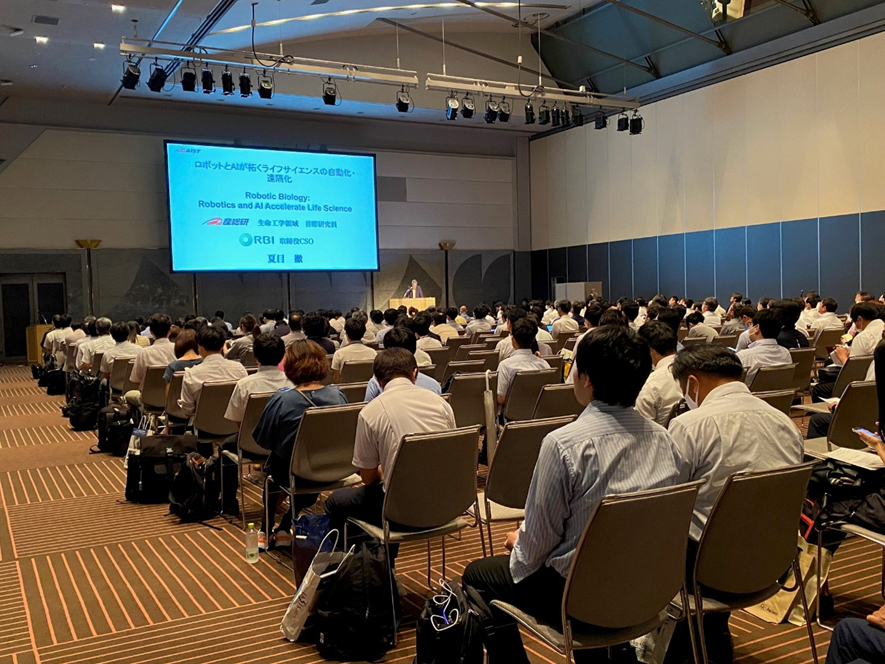
[Latest trends in chemical substance regulations spreading worldwide]
Friday, September 8th 13:00-14:30
Makuhari Messe International Conference Hall 2F Convention Hall B
Even in the midst of a typhoon, the event was nearly full, indicating a high level of interest. This topics seminar consisted of three parts.
1. Trends in PFAS regulations overseas
Chemours-Mitsui Fluoroproducts Co., Ltd.
Corporate Planning Office
Mr. Jun-ichi ISHIKAWA
PFAS is a general term for organic fluorine compounds that have multiple properties and are greatly useful for improving the performance and functionality of products. This lecture introduced PFAS regulations in Europe and the United States, as well as regional differences.
Europe has implemented regulations ahead of the United Nations and aims to create a TOXIC-free social environment by restricting PFAS as a group of compounds in 2023 and implementing “faucet-based” regulations (regulation on manufacturing and usage) based on the precautionary principle. There is a grace period, but with limited exceptions, they are subject to regulations depending on their usage, and cannot be imported, produced, or sold. On the other hand, the United States has proposed “PFAS Strategic Roadmap” that incorporates multifaceted perspectives such as risk assessment and pollution cleanup.
2. Trends in European environmental regulations (REACH/RoHS/Eco-design)
Japanese Business Council in Europe/Policy Manager
Mr. Tetsuzaburo Miura
European laws and regulations have an impact on laws and regulations around the world, and a lecture was given on how the EU is proceeding with regulations regarding REACH/RoHS/Ecodesign. He also introduced how Japanese companies are responding to strict regulations in Europe.
3. Latest updates on the Stockholm Convention
Ministry of Economy, Trade and Industry
Manufacturing Industries Bureau, Chemical Management Policy Division
Mr. Shin-ichi Irumagawa
This lecture introduced international efforts regarding chemical substance management, as well as an overview of the Stockholm Convention (POPs Convention) and substances newly added to Annex-A.
In addition, explanations were given regarding substances for which ” draft risk management evaluation” are currently being prepared for future addition to the Annex.

Views: 217

